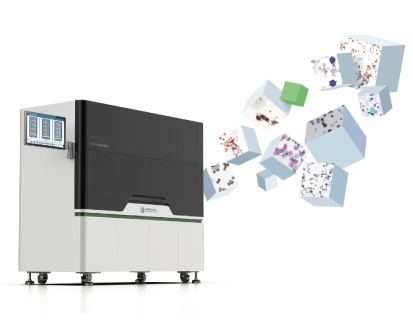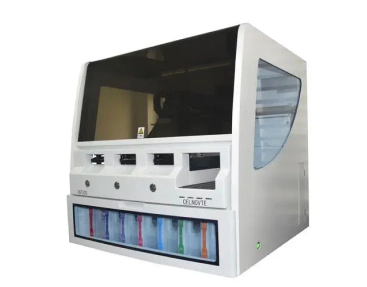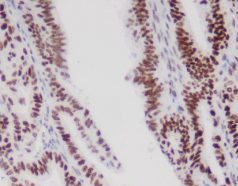How Slide Stainers Enhance Tissue Analysis in Drug Development
2025-04-03
By admin
In the rapidly changing realm of drug creation, accuracy and speed are essential. Examining tissues is crucial for grasping illness patterns, confirming drug goals, and checking treatment success. Here come slide stainers—automatic devices that transform how scientists ready and study tissue specimens. These units simplify tasks, boost uniformity, and raise the standard of findings, making them vital in today’s medical research.
If you’re a researcher, lab supervisor, or drug development expert, this article suits you. We’ll look at how slide stainers improve tissue studies, why they’re key in drug creation, and how to use their features well. With ideas rooted in science and real-world uses, you’ll understand why choosing a suitable slide stainer can reshape your study results.
The Role of Tissue Analysis in Drug Development
Studying tissues forms a foundation for drug discovery and growth. It means looking at tissue pieces to spot cell shifts, protein presence, and molecule connections. These discoveries aid scientists in finding illness signs, judging drug impacts, and confirming safety before human tests. Yet, old-fashioned hand-staining ways are sluggish, effort-heavy, and open to mistakes, which can stall advances and weaken outcomes.
This is where slide stainers step up. By making staining automatic, they cut time, lower differences, and allow high-volume analysis. These aspects are critical for speeding up drug creation schedules.
How Slide Stainers Improve Tissue Analysis
Enhancing Workflow Efficiency with Slide Stainers
Why It’s Important
In drug creation, time equals cash. Staining tissue slides by hand can take ages, particularly with big groups for early-stage trials. Slowdowns in preparing samples drag the whole research chain, from goal checks to safety tests.
How Slide Stainers Assist
Automatic slide stainers sharply reduce prep duration. They manage many slides at once, adding reagents precisely and steadily. This lets scientists concentrate on reviewing data instead of dull chores.
- High Output: Handle lots of slides in one go, perfect for broad studies.
- Adjustable Options: Tailor steps for certain dyes, guaranteeing steady repeats.
- Less Work: Free team members for more useful jobs like reading findings.
Sample Case
Celnovte’s Full-Automatic Multiplex IHC Stainer processes up to 30 slides together, easing tasks in active labs.
Ensuring Consistency and Reproducibility
Why It’s Vital
Uneven staining can twist tissue study results, causing shaky judgments. In drug creation, where regulators need repeatable facts, variation poses a big challenge.
How Slide Stainers Fix It
Slide stainers spread dyes evenly over all specimens, cutting errors from human hands. Their automatic setups manage factors like reagent amounts, wait times, and rinse stages, giving steady results each time.
- Set Plans: Remove doubt with ready-made dye programs.
- Group Sameness: Make sure all slides in a batch align in quality and strength.
- Record Keeping: Many new stainers track steps, helping meet Good Laboratory Practices (GLP).
Handy Advice
For multi-dye needs, look at Celnovte’s Full-Automatic IHC/ISH Stainer, made for reliable multi-sign analysis.
Improving Stain Quality for Accurate Analysis
Why Quality Is Crucial
Top-notch staining shows tiny cell details—key for spotting faint tissue shifts during drug trials. Badly dyed slides can hide vital points, leading to missed clues or wrong negatives.
How Slide Stainers Boost Quality
Advanced slide stainers perfect each staining phase, from fixing to final dyes. They use exact dispensing tools and heat controls to improve dye take-up and sharpness.
- Smooth Spread: Prevent patches or odd dyeing with automatic reagent flow.
- Perfect Timing: Stop over- or under-dyeing with spot-on wait controls.
- Flexibility: Work with various dyes (e.g., H&E, IHC) for different study needs.
Table: Hand vs. Automatic Dye Quality
|
Feature |
Hand Dyeing |
Slide Stainers |
|
Dye Evenness |
Uneven, person-based |
Very steady |
|
Work Speed |
Slow, one-by-one |
Quick, many slides |
|
Mistake Chance |
More likely |
Tiny, machine-run |
|
Detail Clearness |
Spotty |
Sharp, exact |
Supporting Advanced Techniques in Drug Development
Why It Changes the Game
Drug creation leans more on complex ways like immunohistochemistry (IHC) and in situ hybridization (ISH). These methods need exact dyeing to catch multiple signs or gene activity, vital for tailored medicine and cancer studies.
How Slide Stainers Make It Possible
Modern slide stainers are crafted for tricky steps. They handle multi-dye tasks, letting scientists study several targets on one slide at once—a plus for exploring drug effects at cell levels.
- Multi-Dye Skill: Dye for several proteins or RNA together.
- Fine Tuning: Adjust settings for fragile ISH probes.
- Growth Ready: Fit rising study needs without losing quality.
Sample Case
Celnovte’s Fully Automatic Liquid-Based Cytology & Immunocytochemistry Stainer shines in advanced cell and IHC uses.
Reducing Costs and Waste in the Long Run
Why Saving Matters
Hand dyeing uses extra reagents and hours, hiking expenses. In drug creation, where funds are slim and deadlines tight, waste can throw projects off track.
How Slide Stainers Save
By automating reagent flow and cutting mistakes, slide stainers streamline resource use. Their accuracy lowers the need for redo tests, sparing both supplies and effort.
- Reagent Thrift: Use just-right amounts, avoiding excess.
- Less Repeats: Steady results cut failed tries.
- Durability: Tough units like Celnovte’s Automatic IHC Slide Stainer last years with solid service.
Meet Celnovte: Your Trustworthy China Slide Stainer Supplier
When picking gear for tissue studies, teaming with a dependable provider matters greatly. Celnovte Biotechnology, located in China, excels as a top source of creative answers, including cutting-edge slide stainers. Focusing on immunohistochemistry (IHC) and in vitro diagnostic (IVD) tools, Celnovte supplies a variety of automatic staining setups built for exactness and dependability. With a solid research base and a history of excellence—shown by their top-scoring self-cloned antibodies in NordiQC reviews for six straight years—Celnovte is a reliable pick for labs globally.
FAQs About Slide Stainers in Tissue Analysis
Q1. What Are Slide Stainers, and How Do They Function?
A1. Slide stainers are automatic tools that add dyes or antibodies to tissue bits on slides. They follow set plans to manage reagent flow, wait times, and rinses, ensuring even dyeing for study.
Q2. Can Slide Stainers Manage Tiny Sample Amounts?
A2. Yes, most current slide stainers offer adaptability. They handle small groups well, with tweakable settings to fit different sample sizes without wasting supplies.
Q3. How Do Slide Stainers Boost Data Trust?
A3. By automating dyeing, slide stainers shrink human slips and differences. This brings steady, repeatable outcomes, key for true tissue studies in research.
Q4. Are Slide Stainers Fit for All Dyeing Methods?
A4. Many slide stainers cover a broad scope, like H&E, IHC, and ISH. Still, check the unit’s details to confirm it matches your exact plan.
Lift Your Drug Development with Slide Stainers
Slide stainers go beyond mere lab gear—they’re breakthroughs in tissue studies for drug creation. They raise speed, secure repeats, sharpen dye quality, back advanced ways, and trim expenses. For scientists aiming to hasten discovery and deliver solid findings, adding a top-tier slide stainer to your routine is a wise step.
Ready to push your tissue studies higher? Explore Celnovte’s lineup of advanced slide stainers crafted for drug creation needs. Head to their homepage now to find the ideal tool to fuel your research!









